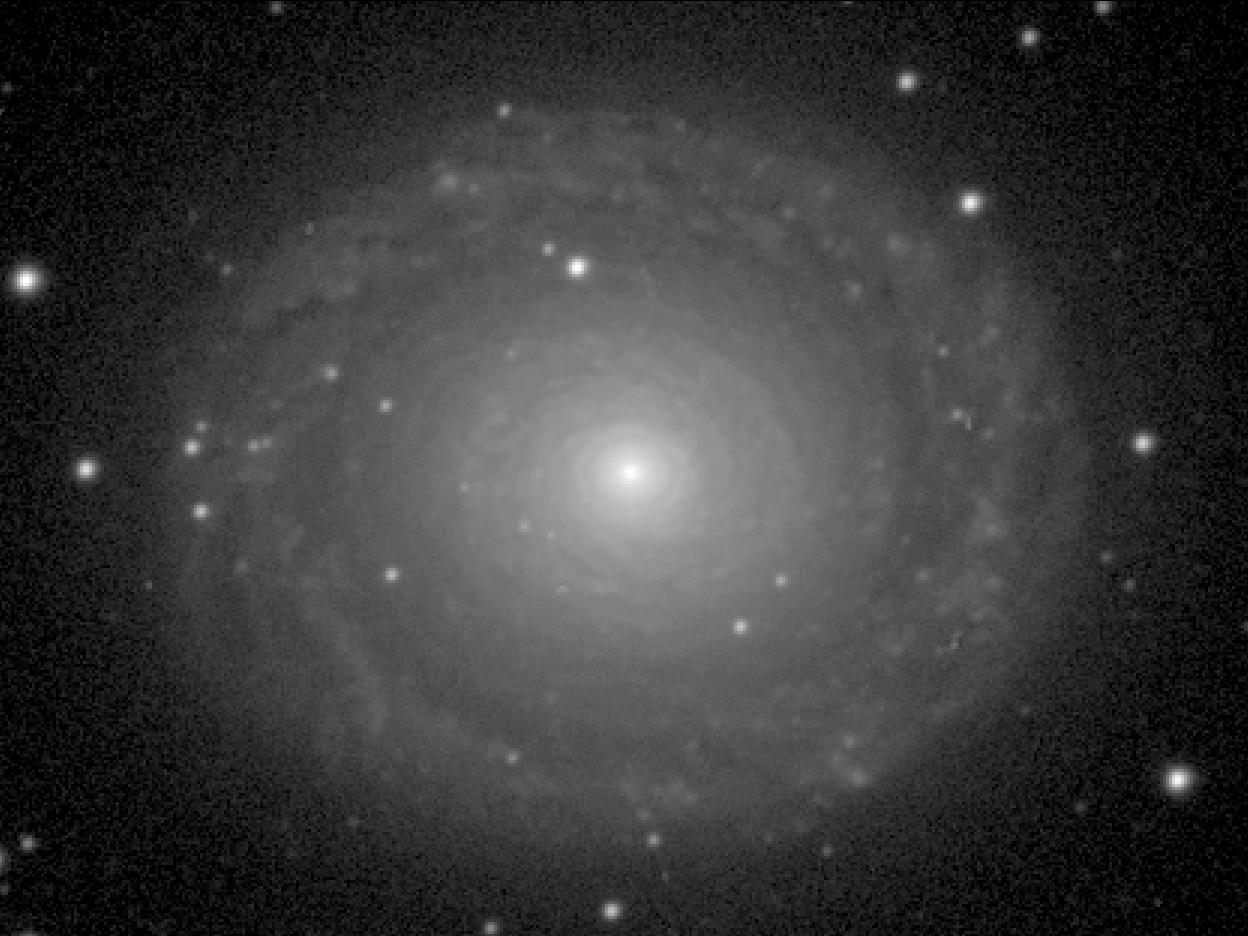

De Vaucouleurs Atlas Type: (R)SA(r)ab
Filter: B
Telescope: KPNO 0.9-m
North up , East left
Field Dimensions: 4.2 x 3.1 arcminutes
RC3 Type: (R)SA(r)ab
RSA Type: Sb(r)II-III
Surface Brightness Range Displayed: 17.5-26.0 mag per square arcsec
Absolute Blue Magnitude: -20.5
Elmegreen Spiral Arm Class: AC 3
De Vaucouleurs Atlas Description:
This galaxy is one of the most axisymmetric systems in the sky. The main B-band image shows a bright central bulge surrounded by a disk of largely flocculent spiral structure. The two rings are fundamentally different in nature. The outer ring is made of tightly wrapped spiral structure, but its weakness as a ring caused it not to be recognized in the Carnegie Atlas . However, the B-I color index map shows that the outer ring is an extremely well-defined zone of active star formation, hence its recognition by de Vaucouleurs is fully justified. An HI study by Buta et al. (1995) showed that most of the neutral gas in NGC 7217 is located in the outer ring , consistent with the active star formation.
In contrast, the inner ring of NGC 7217 is a small, closed feature with almost neutral colors in the color index map. Instead, the color index map reveals a central dust ring that lies on the inner edge of the apparent inner ring (Buta et al. 1995). This dust ring is remarkably uniform with azimuth, while just outside the ring, dust arcs are seen preferentially on the near side. Further out, at about half the radius of the outer ring , a narrow blue zone of star formation is seen. If NGC 7217 were barred, this is exactly where the inner ring would be. This suggests that the small ring in NGC 7217 is the analog of a nuclear ring in an SB galaxy.
In an I-band image (Buta et al. 1995), the character of NGC 7217 's outer ring changes from largely flocculent in B to a global two-armed spiral. Thus, NGC 7217 is ``optically flocculent ", as has been found in other cases (Thornley 1996).
The most interesting aspect of NGC 7217 is that at low surface brightness levels, the isophotes become nearly circular, indicating an extreme bulge-dominated system. Buta et al. (1995) estimated a bulge-to-disk ratio of 2.4, characteristic of systems like the Sombrero Galaxy, NGC 4594 . Another interesting aspect of the galaxy was the detection of counter-rotating stars by Merrifield and Kuijken (1994). The connection between these stars and the massive bulge component remains to be explored.
Although the outer ring is a strong zone of active star formation, it is still rather smooth in blue light. The light patchiness in the flocculent zone, the tight spiral structure, and the dominant bulge form the basis for the Sab classification.